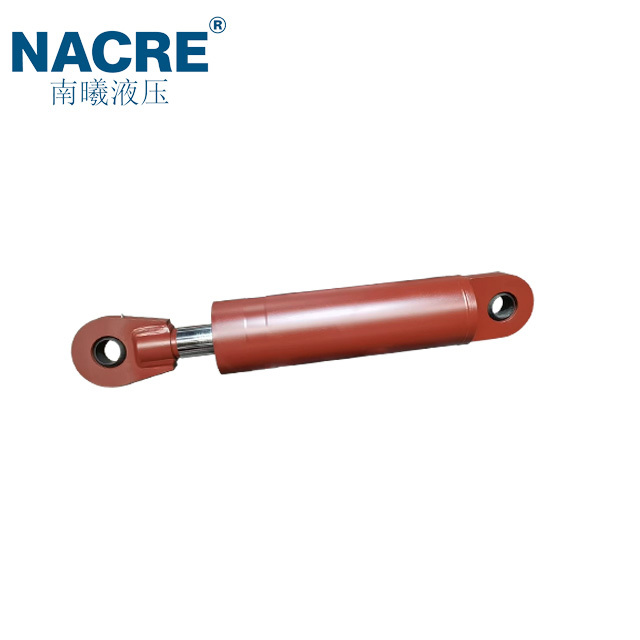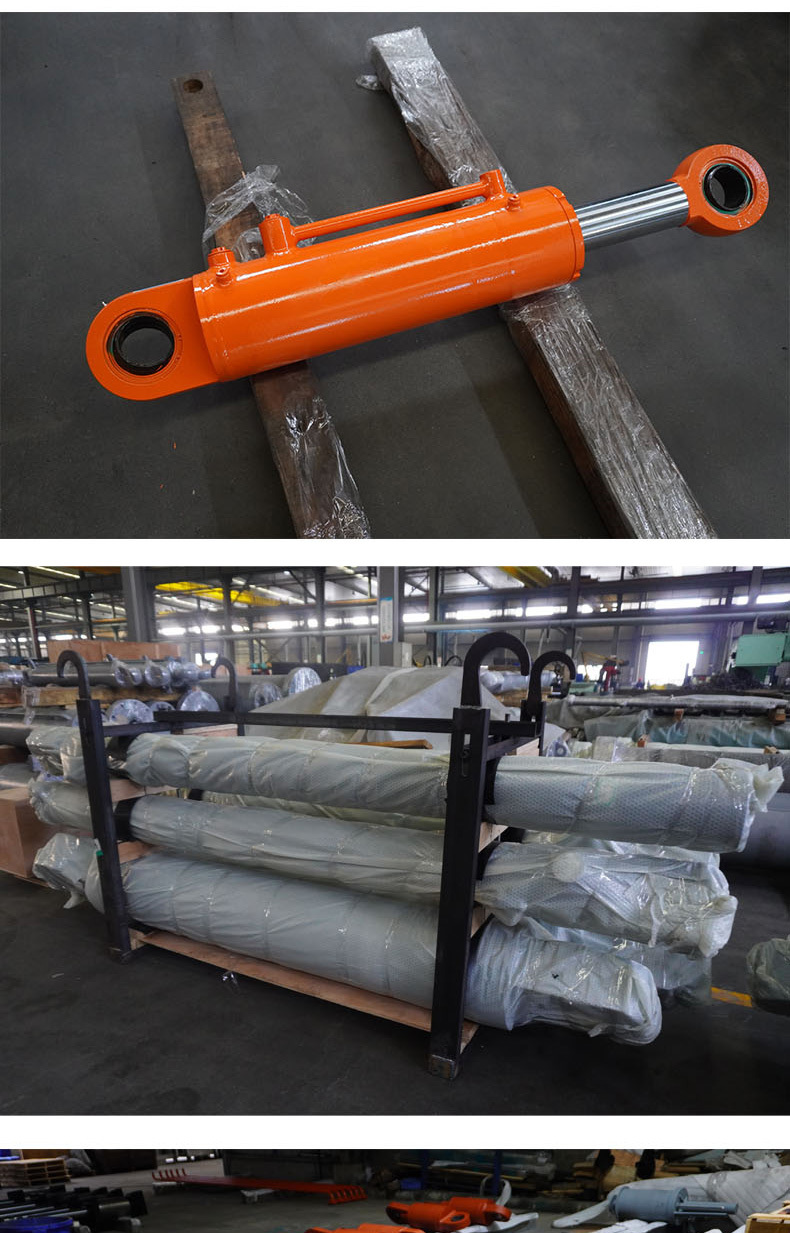Tractor Hydraulic Cylinder: The Heart of Your Farm Equipment
2025-06-06
Tractor Hydraulic Cylinder: The Heart of Your Farm Equipment
Table of Contents
- Introduction to Tractor Hydraulic Cylinders
- Importance of Hydraulic Cylinders in Farming Equipment
- Key Components of a Hydraulic Cylinder
- How Tractor Hydraulic Cylinders Function
- Maintenance Tips for Your Hydraulic Cylinders
- Current Trends in Hydraulic Technology for Tractors
- Common Issues and Troubleshooting Hydraulic Cylinders
- Conclusion
- FAQs about Tractor Hydraulic Cylinders
Introduction to Tractor Hydraulic Cylinders
Tractor hydraulic cylinders serve as the backbone of modern farming equipment, allowing for efficient operation of various implements. These hydraulic systems enable tractors to perform powerful tasks such as lifting, pushing, and pulling with remarkable precision. In this comprehensive article, we will delve into the importance, functionality, components, maintenance, and innovative trends surrounding hydraulic cylinders, which are essential for maximizing productivity on farms.
Importance of Hydraulic Cylinders in Farming Equipment
Hydraulic cylinders are pivotal in agricultural machinery. They are responsible for converting hydraulic energy into mechanical energy, enabling tractors to execute a wide range of tasks. From lifting heavy implements like plows and seeders to controlling attachments with pinpoint accuracy, hydraulic cylinders enhance the overall efficiency of farming operations.
**The benefits of hydraulic cylinders include:**
- **Increased Power**: Hydraulic systems can exert significant force, allowing for the handling of heavy loads with ease.
- **Better Control**: Operators can adjust the speed and force of hydraulic movements, providing precision in complex tasks.
- **Versatility**: Hydraulic cylinders are used in various applications, making them invaluable across different types of farming equipment.
Key Components of a Hydraulic Cylinder
Understanding the components of a hydraulic cylinder is crucial for appreciating its functionality. Here are the main parts:
1. Cylinder Barrel
The cylinder barrel is the outer casing that houses the hydraulic fluid and provides structural integrity to the cylinder.
2. Piston
The piston is a crucial component that moves within the barrel, dividing the cylinder into two chambers. It is responsible for transferring hydraulic pressure into mechanical force.
3. Rod
Attached to the piston, the rod extends outside the barrel and is responsible for delivering the force generated by the hydraulic system to the implement.
4. Seals
Seals prevent hydraulic fluid leaks and ensure efficient operation by maintaining pressure within the cylinder.
5. End Caps
End caps secure the cylinder’s components, providing access points for hydraulic fluid input and output.
How Tractor Hydraulic Cylinders Function
The operation of hydraulic cylinders relies on Pascal's principle, which states that pressure applied to an enclosed fluid is transmitted undiminished throughout the fluid. Here’s how it works in a tractor hydraulic system:
1. Hydraulic Fluid Supply
Hydraulic fluid is stored in a reservoir and pumped through hoses into the hydraulic cylinder when the operator activates the system.
2. Pressure Generation
As the hydraulic fluid enters the cylinder, it exerts pressure on the piston. This pressure causes the piston to move, which in turn pushes the rod outwards.
3. Motion Control
The operator can control the flow of hydraulic fluid to the cylinder, allowing for variable speed and force. This control is essential for tasks that require finesse, such as positioning equipment precisely.
4. Return Stroke
Once the task is completed, the hydraulic fluid is redirected back to the reservoir, retracting the rod and returning it to its initial position.
Maintenance Tips for Your Hydraulic Cylinders
Regular maintenance of hydraulic cylinders is vital for ensuring their longevity and optimal performance. Here are key maintenance practices:
1. Regular Inspections
Conduct routine inspections to check for leaks, wear, and damage. Look for signs of oil on the exterior, which may indicate a seal failure.
2. Fluid Quality Check
Ensure that the hydraulic fluid is clean and free from contaminants. Change the fluid per the manufacturer’s recommendations to prevent sludge buildup.
3. Seal Replacement
Inspect and replace seals as needed, especially if you notice fluid leaks or reduced efficiency.
4. Proper Lubrication
Lubricate moving parts to prevent friction and wear, which can lead to premature failure.
5. Avoid Overloading
Exceeding the specified load capacity can damage the hydraulic system. Always follow the manufacturer's guidelines.
Current Trends in Hydraulic Technology for Tractors
The agricultural industry continuously evolves, and so does hydraulic technology. Some current trends include:
1. Smart Hydraulic Systems
Advancements in IoT (Internet of Things) technology allow for smart hydraulic systems that monitor performance in real-time, enabling predictive maintenance and reducing downtime.
2. Eco-Friendly Fluids
The use of biodegradable hydraulic fluids is on the rise, minimizing environmental impact while maintaining performance.
3. Advanced Sealing Technologies
New materials and designs in sealing technology enhance reliability and reduce the chances of leaks, thereby improving overall efficiency.
4. Compact Designs
Manufacturers are focusing on creating more compact hydraulic systems that save space while maintaining power, allowing for greater versatility in equipment design.
Common Issues and Troubleshooting Hydraulic Cylinders
Hydraulic cylinders can encounter various issues that may hinder performance. Here are common problems and troubleshooting steps:
1. Slow Operation
If the cylinder operates slowly, check for low hydraulic fluid levels or air trapped in the system. Bleed the system if necessary.
2. Leaking Seals
Fluid leaks around the cylinder may indicate worn seals. Replace seals promptly to prevent further damage.
3. Cylinder Won’t Move
If the cylinder does not move, ensure there is sufficient hydraulic fluid and that the pump is operational. Inspect for any blockages in the hydraulic lines.
4. Unusual Noises
Strange noises during operation can indicate internal damage or improper fluid levels. Investigate the source and rectify issues as needed.
FAQs about Tractor Hydraulic Cylinders
1. What is a tractor hydraulic cylinder?
A tractor hydraulic cylinder is a mechanical device that uses hydraulic pressure to generate linear motion. It plays a critical role in lifting and controlling implements attached to tractors.
2. How do I know if my hydraulic cylinder is failing?
Signs of a failing hydraulic cylinder include fluid leaks, slow operation, unusual noises, or the inability to extend or retract the rod.
3. What types of hydraulic fluids are best for tractors?
Manufacturers typically recommend using hydraulic fluids that meet specific standards. Biodegradable fluids are also gaining popularity for their environmental benefits.
4. How often should I perform maintenance on my hydraulic cylinders?
Regular inspections should be conducted every few months, while fluid changes and seal inspections should follow the manufacturer's recommendations.
5. Can I repair a hydraulic cylinder myself?
While some repairs can be performed by skilled individuals, complex issues may require professional assistance to ensure safety and proper functionality.
Conclusion
Tractor hydraulic cylinders are undeniably the heart of farming equipment, enabling efficient and powerful operations essential for modern agriculture. Understanding their components, functionality, and maintenance is crucial for maximizing their lifespan and performance. As technology advances, staying updated on the latest trends will ensure that farmers continue to benefit from innovative hydraulic solutions. With the right care and knowledge, hydraulic cylinders can significantly enhance the productivity and effectiveness of farming operations, making them indispensable in the agricultural landscape.
Previous Page
Questions?
We are here to help.







